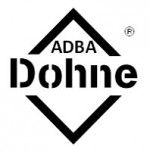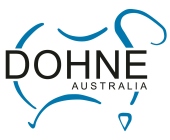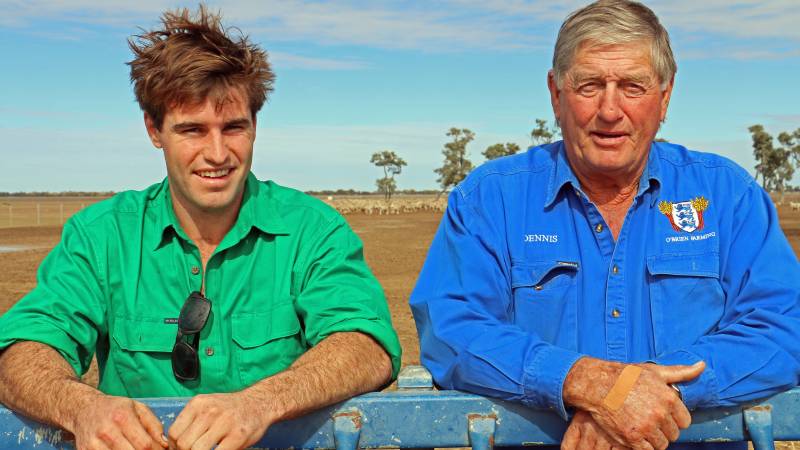Combination of traits gives Dohne advantage
The combined carcass and wool value of Dohnes is proving the goods in a vertically integrated broadacre cropping operation in northern New South Wales.
The O’Brien family of Walgett value add their cereal and pulse crops through an on-farm sheep feedlot, turning off up to 8000 Dohne mixed sex lambs a year to the domestic and export markets.
The lambs are produced by the family’s 4000 Dohne ewe flock and also sourced from other regional commercial purebred flocks.
The lambs have a week’s induction in the 3500 head capacity feedlot on a barley, faba bean and pellet ration then move on to self feeders with 75 per cent barley, 20pc faba beans and 5pc pellets.
Average daily liveweight gains are 280 to 300 grams to give a net feed conversion of one kilogram of body weight to four kilograms of grain consumed.
Lambs enter at 35kg liveweight for an eight-week feeding period, while lambs 40kg plus are fed four to six weeks, with exit liveweights at 50kg.
The last consignment of 493 Dohne lambs were sold to Thomas Foods International, Tamworth, in May for $5.40/kg dressed at an average liveweight of 55kg. The average carcase weight was 25.9kg and the average value including skins of $17, was $156.
Dennis and wife Trish, with sons Justin and Sam, run the 11,336 hectare Cryon Station on a mix of 75pc cropping and 25pc sheep.
“The last lot of lambs yielded 47pc and we use that feedback to fine tune the feeding program,’’ Justin said.
“We know if it is a 55kg lamb at exit, it will dress at 25.5kg.
“We never had any problems with fat cover – they are a leaner animal with less wastage for the butcher.’’
Dennis O’Brien is a second generation wool grower and began running Merinos on Cryon in 1972, selling 10,000 wethers a year as wool cutters.
The reserve price scheme contributed to his decision to switch to grain growing.
“With high end markets growing all the time in Japan and the US, I was looking around for a dual purpose, self-replacing sheep,” Mr O’Brien said.
A Dohne field day at Cryon Station in 2004 convinced Dennis to invest in 10 Dohne rams the following year.
They were joined to 3000 Merino ewes averaging 21 micron and cutting 5.5kg.
“We wanted the carcase but also wool just in case the wool market did improve,’’ Dennis said.
“It was a business decision to pursue the meat market and it’s been a good one. The Dohnes are easy to manage, are high fertility, do well in the feedlot and yield well.’’
Justin and Dennis O’Brien, Croyn Station, Walgett, value add their cereal and pulse crops through an on-farm sheep feedlot, turning off up to 8000 Dohne mixed sex lambs a year to the domestic and export markets.












